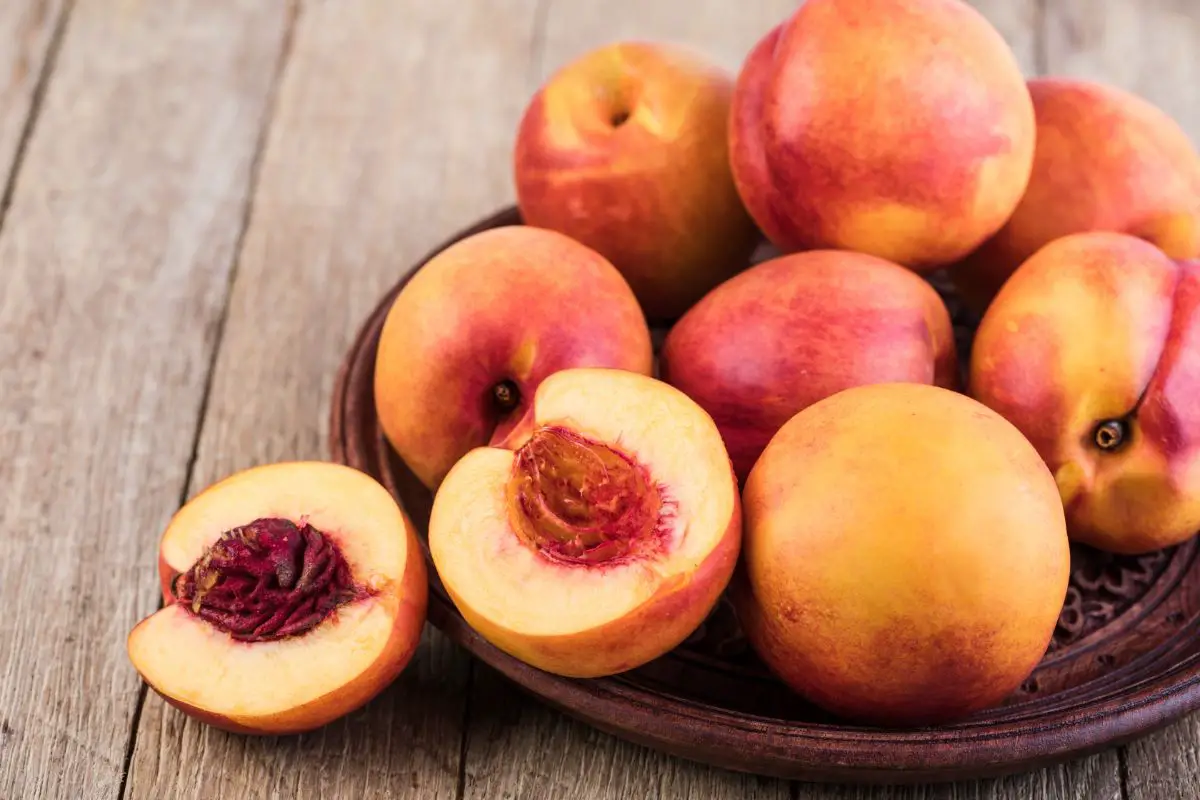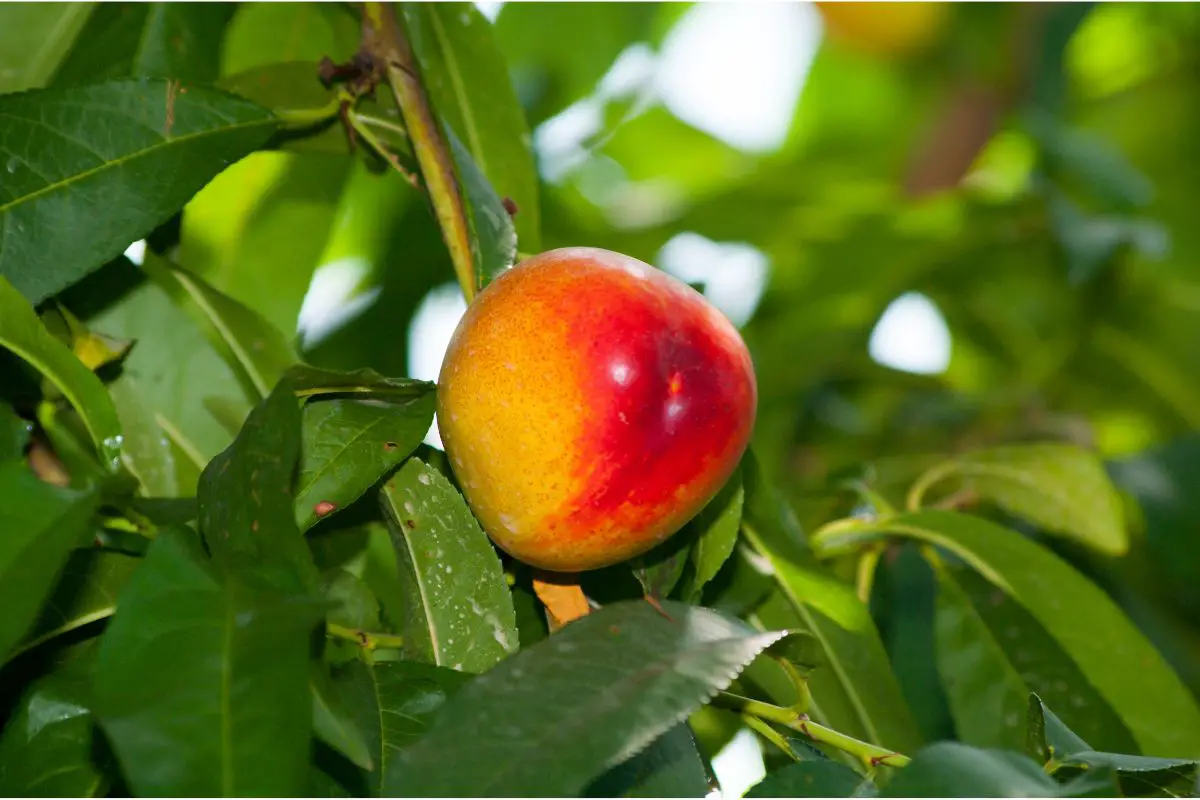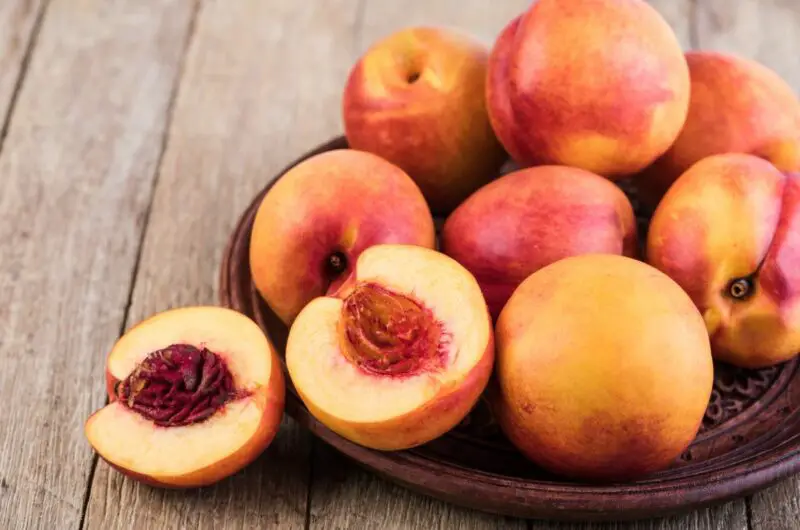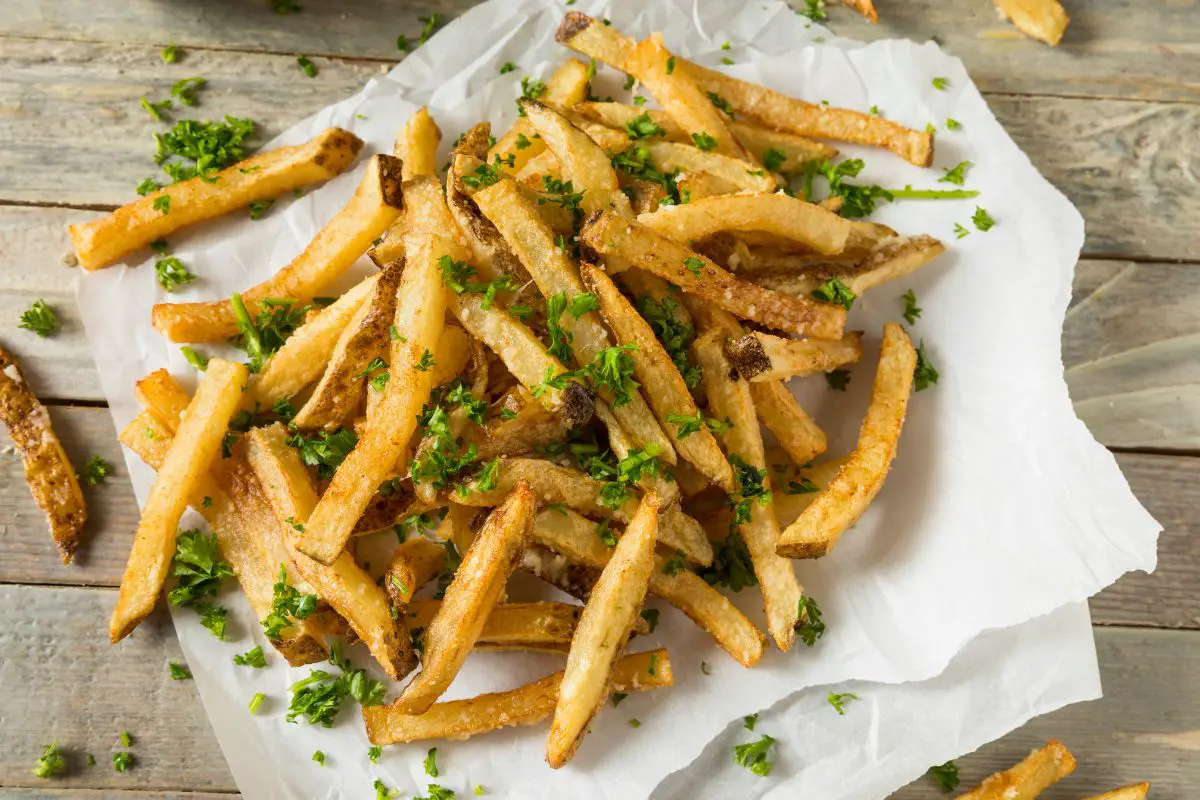Nectarines are probably what come to mind when you think of nutritious, juicy fruits. But nectarines are also versatile too, and there are a few ways you can enjoy them.
There are two main types of nectarines, freestones and clingstones and both are delicious!

Nectarines are becoming more widely available as they grow in popularity and can be easily found in most markets.
But if you’ve never had a nectarine before you might be wondering what they taste like. Well, we have the answer! Below you’ll find all you could wish to know about nectarines.
So What Are Nectarines?
Nectarines are like peaches but they don’t have the signature fuzzy skin. Rather, they have smooth, soft skin and a hard stone in their center.
If you’re not too familiar with fruit types, you might confuse them for apricots and plums because they look rather similar, particularly when they’re ripe.
Nectarines are members of the Rosaceae family and are widely grown in warm, temperate climates. Their stone is similar to fuzzy peaches and has white or yellow flesh.
Clingstone peaches stick to the pit – hence the name – and freestones separate from the stones.
Although people mainly eat nectarines when they’re ripe and uncooked, you can also enjoy them cooked.
They’re fabulous for dessert, and you can get really creative with nectarines! They’re a great fruit to experiment with while cooking.
What Is The Flavor Of Nectarines?
Nectarines are delicious and juicy, with whiter nectarines being sweeter and less acidic than yellow nectarines.
When comparing them to other fruits, nectarines naturally have a similar taste to fuzzy peaches, but they are not the same thing.
Nectarines are smaller than peaches and are very fragrant.
Apricots, peaches, and nectarines are quite similar to each other, and it is easy to swap one out for the other by tweaking the quantity you use.
If none of these fruits are available to you, then plums are also an option.
Because they share the same family, many people refer to peaches as nectarines, and this is partly right because technically nectarines are a variety of peach.
You can eat unripe nectarines, but they will be less juicy and tasty. Poached or raw peaches are also edible. Ripe peaches are sweeter and juicier and have an aftertaste that is slightly tangy.
Nectarines are not just delicious but packed with nutrients such as copper, fiber, potassium, protein, sugar, and vitamins A, B, and C and also have fewer calories than peaches.
This brings us onto our next question…
Are Nectarines Good For You?
Nectarines are packed with important antioxidant compounds like anthocyanins, catechins, ellagic acid, epicatechins, gallic acid, and neochlorogenic acid.
Antioxidants are essential for our bodies as they protect our cells against free radical damage.
Nectarines also have anti-cancer properties that stop the development and spread of some types of cancers.
Nectarines also have a similar nutritional profile to peaches. They’re low in carbohydrates and fat, and the fats found in nectarines consist of polyunsaturated fats and monounsaturated fats.
These types of fats are very good for your heart and promote heart health.
However, proteins are not the richest source of plant protein as they only contain 1.5 grams of protein per serving.

Still, another benefit of nectarines is that they have a low glycemic index of 43, meaning your blood sugar will not spike even when you eat the sweetest nectarine.
Nectarines are also widely beloved to reduce the risk of diabetes, heart disease, and obesity. The antioxidants found in nectarines can reduce blood pressure, cholesterol, vascular inflammation, and boost blood circulation.
Nectarine has a lot of health benefits to offer, but you might be allergic to them. Nectarine allergies are quite rare, but allergies can develop via Oral Allergy Syndrome.
OAS is a phenomenon where the immune system mistakes some food items for pollen that will trigger an allergic reaction.
However, treatment for a nectarine allergy is not normally needed as the symptoms dissipate when you swallow nectarines.
Where Do Nectarines Grow And Where Can You Buy Them?
We can trace the origins of nectarines to China where they were first discovered and later cultivated in Greece, Persia, and Rome.
A Chinese emperor coined the term ‘nectar of the gods,’ to describe the fruit and thus the name nectarine was born!
By the late 17the century, Nectarines were being cultivated in the UK, and this cultivation eventually spread to Spain and it was the Spanish who introduced the fruit to the United States.
Nectarines are rarer than peaches because they are more likely to fall victim to disease, and are in bloom at certain types of year.
You will normally find fresh nectarines at farmer’s markers from July to mid-September.
Preparing And Cooking Nectarines
Although you can eat unripe nectarines, they’re probably not going to taste great! However, ripe peaches are delicious and versatile to cook with, and are just as tasty when they’re uncooked.
You also reap the benefits of all the nutrients too, you just have to wash the fruit with clean water before you eat it.
If you dislike nectarine peel, you can take the peel off before slicing the fruit or eating it. One thing to keep in mind is that you should avoid putting unripe nectarines in the fridge if possible.
To get really creative with nectarines, cut them into slices and make them into salsas or add them to salads. Nectarines also make great appetizers.
There are also many recipes where you can utilize cooked nectarines too.
For example, ricotta pizza with grilled chicken and grilled nectarines is an unconventional but delicious option for a barbecue, or if you want to get healthier, why not make a Panzanella salad with grilled nectarines?
Cooking a roast chicken in a skillet with tomatoes, red onions, and nectarines is also a delicious dish to make when hosting a dinner for family and friends.
For sweeter dishes, you can add nectarines to ice cream, cakes, cupcakes and even smoothies.
How To Store Nectarines
Ripe nectarines should be placed in the fridge unwrapped and eaten within a couple of days.
To get the best flavor, you should leave nectarines out at room temperature so they’re not too cold when you eat them.
We recommend storing nectarines that are not quite ripe in a loose paper bag for about two days, and only put them in the fridge when they are ripe.
Final Thoughts
We hope this article has encouraged you to try out nectarines and incorporate the fruit into your cooking.
Your local stores will likely sell nectarines so buying some and whipping up some delicious dishes should be easy!
If you want to try out a recipe that calls for nectarines but you don’t have any, you can swap them out for other fruits.
For example, apricots, fuzzy peaches and plums make good substitutes for dishes that call for nectarines.
Because nectarines are nutritious, they’re a great fruit to add to your diet for the health benefits as well as their delicious taste!
Nectarines are also so versatile that they can be used in a variety of dishes, and we hope this article has encouraged you to try out some creative cooking!
What Do Nectarines Taste Like? Everything You Need To Know
Course: Taste Like4
servings30
minutes40
minutes300
kcalIngredients
Nectarines
Ingredients from your favorite recipes
Directions
- Although you can eat unripe nectarines, they’re probably not going to taste great! However, ripe peaches are delicious and versatile to cook with, and are just as tasty when they’re uncooked.
- You also reap the benefits of all the nutrients too, you just have to wash the fruit with clean water before you eat it.
- If you dislike nectarine peel, you can take the peel off before slicing the fruit or eating it. One thing to keep in mind is that you should avoid putting unripe nectarines in the fridge if possible.
- To get really creative with nectarines, cut them into slices and make them into salsas or add them to salads. Nectarines also make great appetizers.
- There are also many recipes where you can utilize cooked nectarines too.
- For example, ricotta pizza with grilled chicken and grilled nectarines is an unconventional but delicious option for a barbecue, or if you want to get healthier, why not make a Panzanella salad with grilled nectarines?
- Cooking a roast chicken in a skillet with tomatoes, red onions, and nectarines is also a delicious dish to make when hosting a dinner for family and friends.
- For sweeter dishes, you can add nectarines to ice cream, cakes, cupcakes and even smoothies.
Recipe Video
https://www.youtube.com/watch?v=fc2ibgA0_7IVideo can’t be loaded because JavaScript is disabled: White Nectarine Taste Test | Unusual Foods (https://www.youtube.com/watch?v=fc2ibgA0_7I)- What Exactly Do Chickpeas Taste Like? Is There A Distinct Flavor? - September 30, 2023
- Top 11 Low Carb Options at Sonic Drive-In for Keto Diet - September 30, 2023
- What Should You Serve Alongside Potato Salad? 8 Incredible Side Dishes - September 30, 2023











